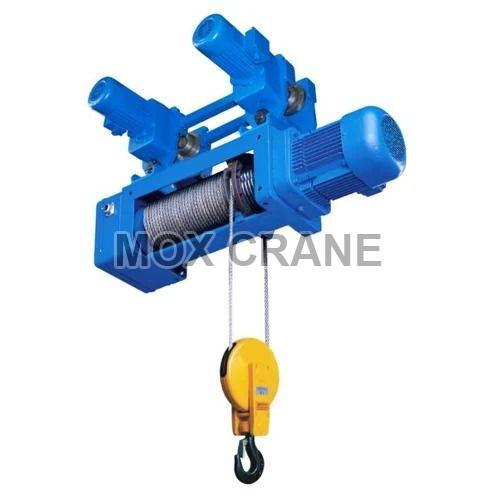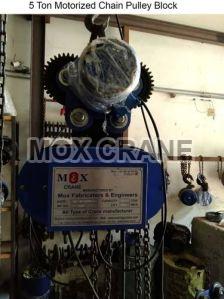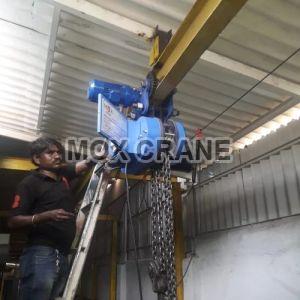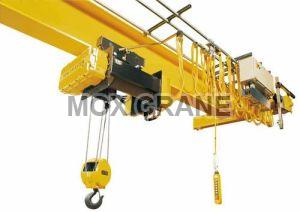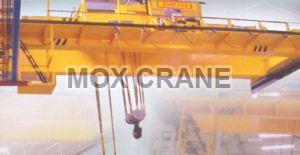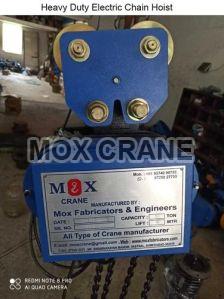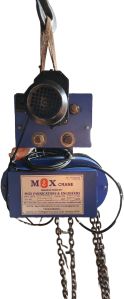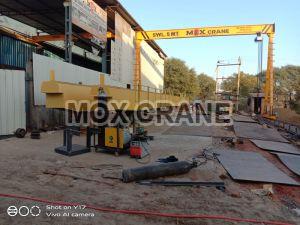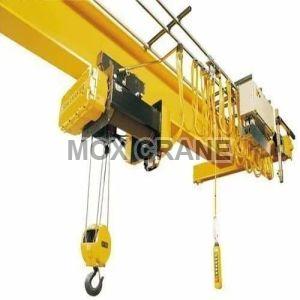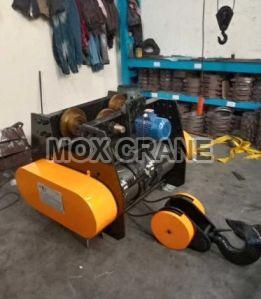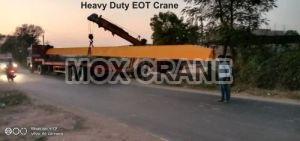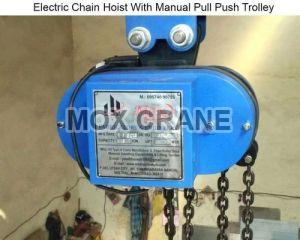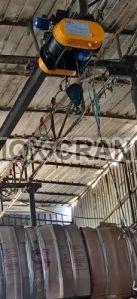- View Mobile Number
moxcrane@gmail.com
| Business Type | Manufacturer, Supplier |
| Brand Name | Mox |
| Loading Capacity | 10-15Tons, 15-20Tons, 5-10Tons |
| Driven | Mechanical |
| Click to view more | |
Product Details
A motorized wire rope hoist is an industrial lifting device designed to lift heavy loads with the help of a wire rope and an electric motor. Unlike manual hoists, which require physical effort to operate, a motorized wire rope hoist uses an electric motor to raise and lower loads, making it more efficient for heavy-duty applications. Key Features of a Motorized Wire Rope Hoist: Electric Motor: The electric motor provides the power necessary to lift and lower the load, making the process faster and more efficient than manual operation. Motors are usually connected to a gearbox that helps in controlling the speed and torque of the hoist, allowing precise lifting and lowering. Wire Rope: A high-strength steel wire rope is used to lift the load. The wire rope is wound around a drum or a series of pulleys, allowing it to move vertically. Wire ropes are designed to handle large loads, making the hoist suitable for a variety of heavy lifting tasks. Load Capacity: Motorized wire rope hoists can typically handle a wide range of lifting capacities, from smaller hoists (around 1 ton) to heavy-duty models capable of lifting up to 100 tons or more. Trolley: The hoist is usually mounted on a trolley that runs along an overhead beam or rail system. This allows for horizontal movement of the load as well as vertical movement, enabling precise positioning of heavy objects. Trolleys can be motorized or manually operated depending on the application. Control System: Pendant control: A wired control is often used to operate the hoist from a safe distance. It allows the operator to control lifting, lowering, and trolley movement. Remote control: In some models, a wireless remote control system is available, which enables the operator to control the hoist from even further distances and reduces the risk of accidents. Limit switches: Safety limit switches are installed to prevent the load from moving beyond the safe limits of the hoist, preventing damage or accidents. Brakes: Motorized wire rope hoists typically include an automatic brake system that holds the load securely when the motor is not operating. The brakes are designed to engage quickly in case of a power failure or if the motor is turned off, ensuring the safety of the load. Speed Control: Some motorized wire rope hoists come with variable speed controls, which allow the operator to adjust the lifting speed based on the application’s requirements. This gives more precision when positioning loads. Components of a Motorized Wire Rope Hoist: Hoist Drum: The wire rope is wound around this drum as it is lifted or lowered. Motor: Powers the drum and the hoist system. Gearbox: Helps convert the motor’s rotational motion into lifting motion, controlling the speed and force applied to the load. Hook: Attached to the wire rope to lift the load. Safety Features: Including overload protection, emergency stop button, and limit switches to ensure safe operation. Types of Motorized Wire Rope Hoists: Monorail Hoists: These hoists are typically used on a single rail or beam, which limits the hoist to a specific direction of movement (usually horizontal). Double Girder Hoists: These hoists operate on a double beam system, which provides better stability and allows for higher lifting capacities and greater lifting heights. Under-slung Hoists: These are mounted underneath a beam or girder, ideal for locations where headroom is limited. Explosion-Proof Hoists: These are used in hazardous environments, such as chemical plants or oil rigs, where the potential for explosive materials or gases is high. They are designed to be safe under such conditions. Applications of Motorized Wire Rope Hoists: Manufacturing and Assembly Lines: Lifting heavy parts, machinery, or tools. Warehouses: Moving large packages or products. Construction Sites: Lifting heavy construction materials, such as steel beams, concrete panels, etc. Shipbuilding and Dockyards: Handling large sec

